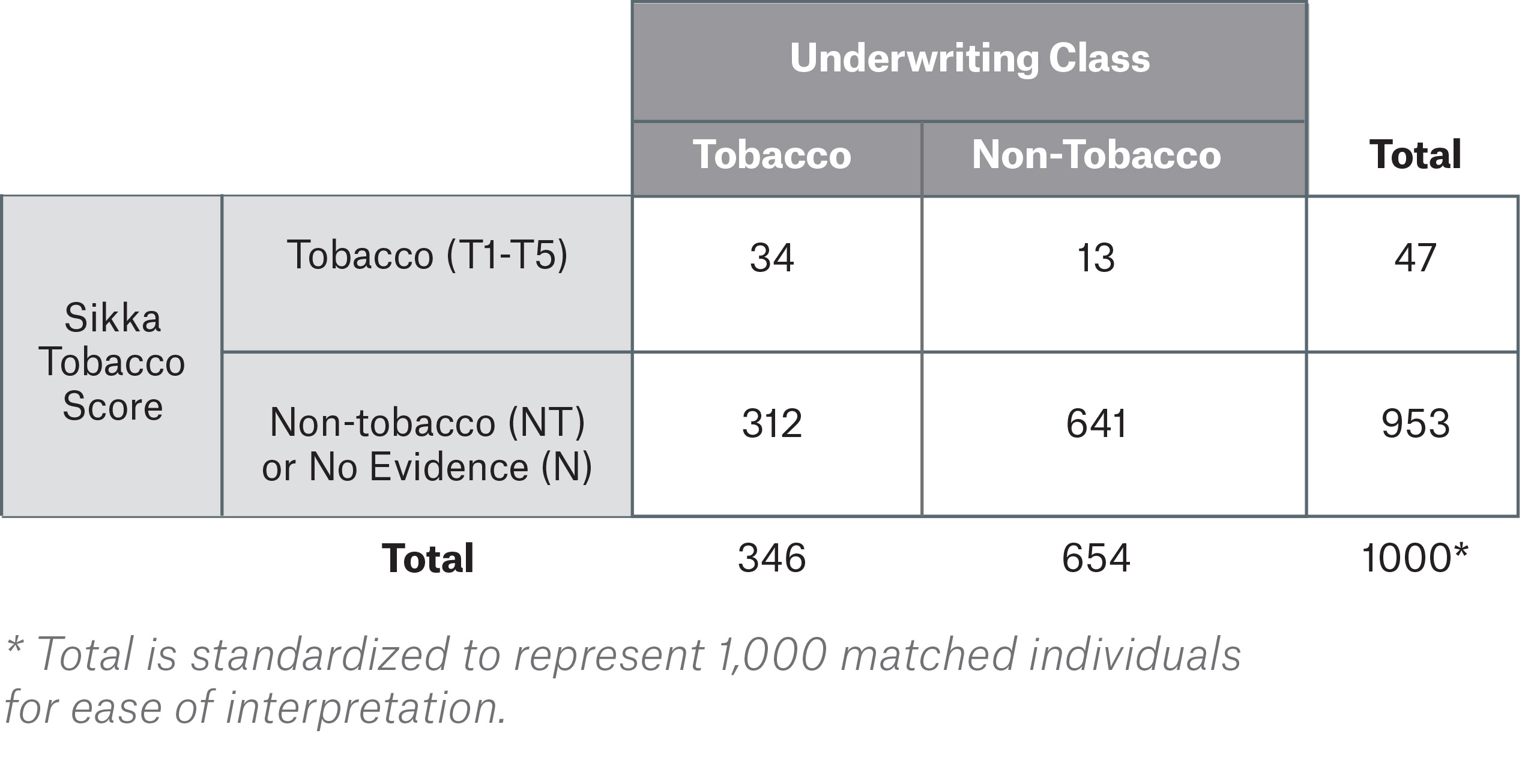Dental health records may be a fertile source of data for life insurers.

Life insurers have long recognized the value of oral fluids for risk assessment through screening for HIV-1 and tobacco or drug use, but oral health itself is not routinely evaluated as part of the underwriting process.
Oral health is recognized by the medical community as an important determinant of overall health, and is associated with other health conditions, socioeconomic indicators, and lifestyle behaviors that are risk factors for mortality. As such, dental health records may be a fertile source of data for life insurers.
Munich Re provides the industry with research, introductions to new tools, and analytical support for carriers interested in incorporating new sources of data in underwriting and risk assessment. We have evaluated supplementary sources of evidence related to oral health in underwriting, particularly for detecting tobacco use without collecting fluids. This paper will explore some of the relationships between oral health and overall health, the impact of poor oral health on mortality as mediated through smoking status, and new sources of underwriting data related to dental records, specifically the Tobacco Score from Sikka Software Corporation.
A holistic view of oral health
The practice of dentistry is evolving towards a multi-dimensional approach to assessing oral health which recognizes the role that dental disease and disorders can play in well-being. This “oral health-related quality of life” framework is recognized by the World Health Organization; it links oral health (e.g. pain or gum issues), oral function (such as chewing), social and environmental factors, emotional wellbeing, and satisfaction with treatment into a measure that guides appropriate dental treatment and improves overall health.1
While oral health problems can arise at any age, they are generally of greater concern in an aging population. For example, periodontal disease (gum damage) and dental caries (cavities) cause inflammation, which is a known contributor to cardiovascular disease, and can allow bacteria to pass into the bloodstream, potentially causing serious life-threatening infections. The risk is greater in those with known cardiovascular disease and may complicate the treatment of other systemic diseases.2,3 Tooth loss can also accelerate gum disease and is associated with poor nutrition.4 Other health conditions, such as diabetes and obesity, and behavioral choices can contribute to poor oral health.5 Notably, tobacco use is a significant risk factor for oral cancers and gum disease.
Oral health and differential mortality
Oral health and smoker detection: Sikka Software Tobacco Score
The NHANES study also supports other research where oral health is correlated with sociodemographic indicators, many of which are already considered during the underwriting process. But smoking status is a very important lurking variable, with smoking and smokeless tobacco use contributing to adverse oral health and higher mortality. Besides increasing the risk of oral cancer, gum disease, and tooth loss and decay, tobacco use causes other observable changes to the mouth, including stained teeth, darkening of the gums, bad breath, and longer wound healing time.7
The Tobacco Score offered by Sikka Software Corporation (Sikka)9 incorporates HIPAA-compliant dental clinical notes into a categorical score reflecting an individual’s likelihood of being a smoker. Sikka develops applications for the retail healthcare industry, covering dental, veterinary, chiropractic, vision, orthodontics, and hearing care markets in the United States, with over 110 million patients on its platform. This platform allows Sikka to perform healthcare analytics across a diverse population and develop tools relevant to the life insurance process. Sikka’s Tobacco Score is generated with an individual’s consent, using his or her dental clinical notes and completed oral health evaluations and dental procedures, which have been parsed and fed through a machine-learning model. Individuals who are matched to Sikka’s patient records are assigned to one of three classes: tobacco user (T), not a tobacco user (NT), or no evidence of tobacco use (N). The tobacco user class (T) is further segmented into five subgroups (T1-T5) based on the age of the clinical note, the frequency of dental procedures related to the periodontal therapies and surgeries, and tobacco counseling procedures, with a higher score indicating a higher degree of confidence about the current tobacco use status.
The NT class signifies that the clinical notes indicate that this individual doesn’t use tobacco, while the N class denotes that while this individual was found in the records, clinical notes provide no evidence for tobacco use.

Accelerated underwriting: oral health and smoking
A primary source of additional mortality risk in accelerated underwriting programs is smoker non-disclosure; smokers are motivated to misrepresent their smoking behavior because they expect to avoid lab (cotinine) tests. Smoker prediction models and tools identify some of the smokers who self-disclose as non-smokers and route them to full underwriting. Smoker models can also be easily integrated with other models for triage and risk selection, as well as other underwriting tools for a comprehensive risk assessment program.
We believe there is support for assessing Sikka’s Tobacco Score in the context of an accelerated process to better manage risk. Sikka’s Tobacco Score can offer protective value alongside smoker prediction models, as it can be used to refine a list of “likely” smokers to “highly likely” smokers. The Tobacco Score’s high specificity means that the model can also be used alongside existing smoker models to correctly identify most of those who are not smokers.
Research confirms that information about dental health can be informative about overall health, and products such as Sikka’s tap into this alternative source of information. Munich Re recommends each carrier perform a retrospective study to best assess the value and application of the Sikka Tobacco Score on its company-specific insured population.
Carriers should also consult their legal team concerning the use of third-party data. Munich Re can provide assistance in program development and monitoring for carriers considering incorporating third-party data sources such as the Sikka Tobacco Score in the life insurance process.
Contact the Author:
/Julia%20Druce.jpg/_jcr_content/renditions/original./Julia%20Druce.jpg)
Newsletter
properties.trackTitle
properties.trackSubtitle